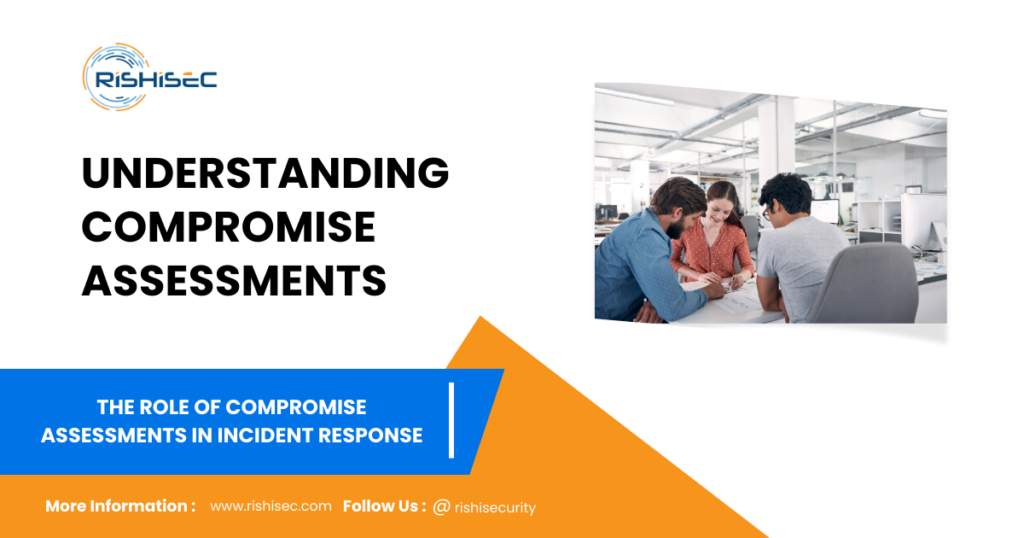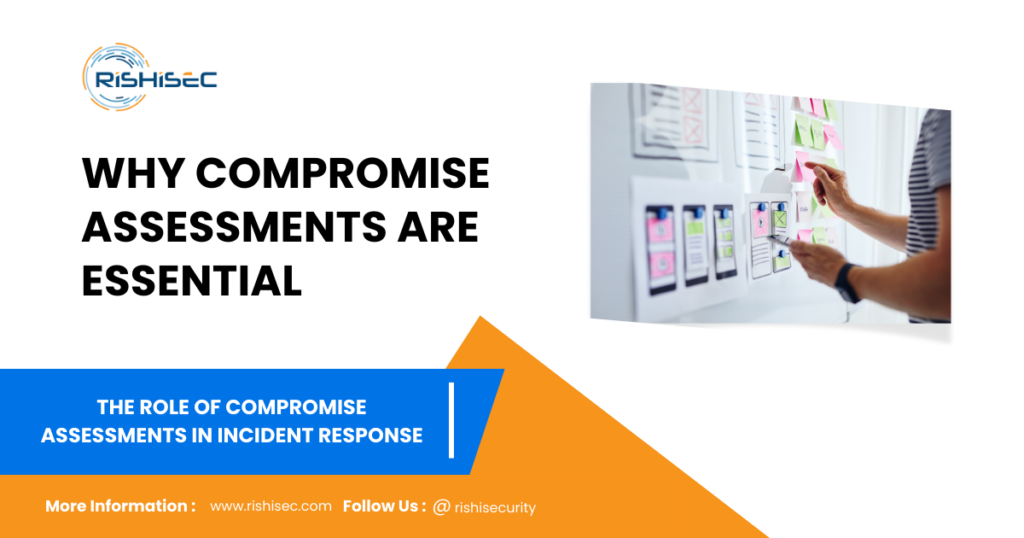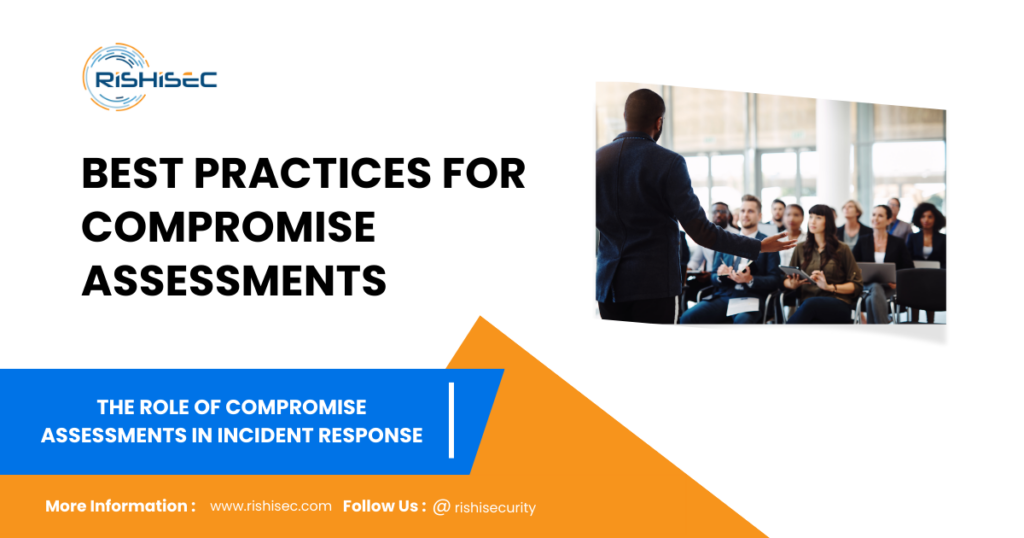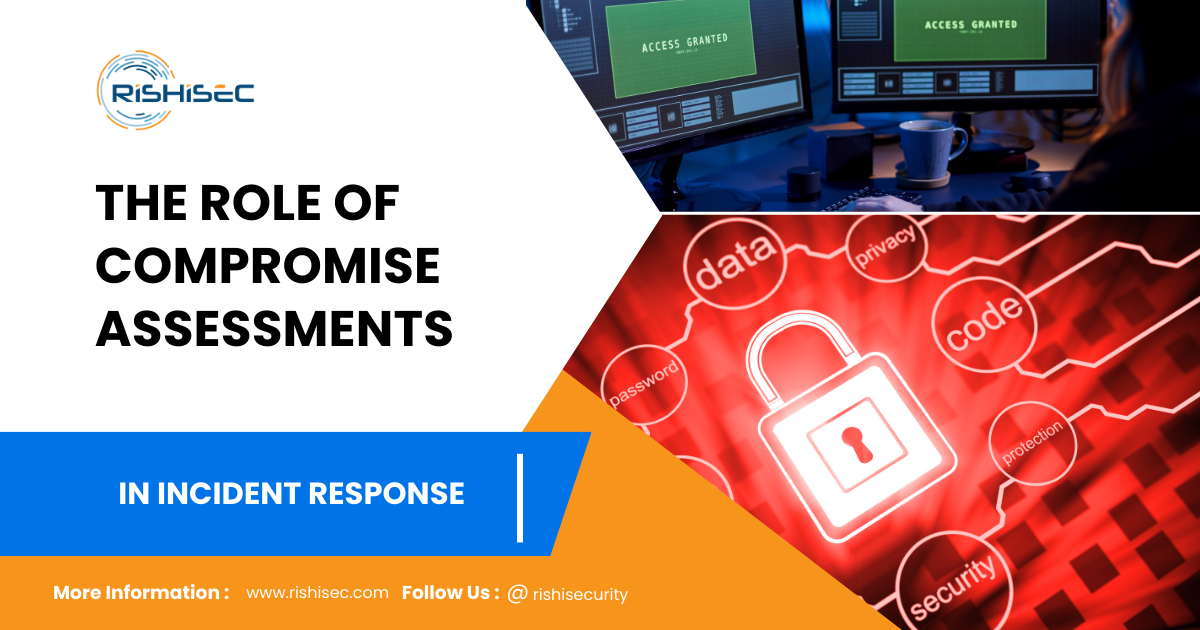Contents
The Role of Compromise Assessments in Incident Response
In today’s evolving cybersecurity landscape, compromise assessments have emerged as a vital component of an effective incident response strategy. The role of compromise assessments in incident response is crucial, as these evaluations help identify and mitigate security weaknesses before malicious actors can exploit them. This comprehensive guide explores the critical role of compromise assessments in incident response and offers actionable insights to enhance your organization’s security posture.
Understanding Compromise Assessments

A compromise assessment is a thorough review of your organization’s systems and networks to detect any signs of unauthorized access or breaches. Unlike traditional security assessments, which focus primarily on identifying vulnerabilities, compromise assessments are designed to uncover whether an attacker has already gained access to your systems. This proactive approach is essential for minimizing damage and preventing future incidents.
Why Compromise Assessments Are Essential

- Early Detection of Threats:
Compromise assessments enable the early detection of threats that may have evaded conventional security measures. By identifying these threats promptly, organizations can take corrective actions to mitigate their impact and prevent potential breaches. - Enhanced Incident Response:
Understanding the nature and scope of a compromise helps in developing a more effective incident response plan. Detailed insights into how an attacker gained access allow for better preparation and management of security incidents. - Improved Security Posture:
Regular compromise assessments contribute to a robust security posture by identifying and addressing vulnerabilities before they can be exploited. This continuous improvement process strengthens overall security and resilience.
Implementing an Effective Compromise Assessment
To conduct a successful compromise assessment, follow these key steps:
- Define Objectives:
Clearly outline the goals of the assessment. Objectives may include identifying specific threats, evaluating the effectiveness of current security measures, or assessing the overall security posture. - Gather and Analyze Data:
Collect data from diverse sources such as logs, network traffic, and endpoint activity. Analyze this data to detect indicators of compromise and understand the attack vectors employed. - Develop a Response Plan:
Based on the assessment findings, create a detailed response plan that addresses identified vulnerabilities and outlines steps for remediation. Ensure this plan is integrated into your broader incident response strategy. - Conduct Regular Reviews:
Schedule regular compromise assessments to continuously monitor for emerging threats and adapt your security measures accordingly. This ongoing process is crucial for maintaining high security standards and readiness.
Best Practices for Compromise Assessments

- Leverage Advanced Tools:
Utilize advanced assessment tools that offer comprehensive visibility into your systems and networks. Tools like SentryCA’s platform provide detailed analysis and actionable insights to enhance your security measures. - Engage Experienced Professionals:
Collaborate with cybersecurity experts who can provide specialized knowledge and expertise in conducting compromise assessments. Their experience is invaluable in identifying subtle indicators of compromise. - Integrate with Incident Response Plans:
Ensure that findings from compromise assessments are seamlessly integrated into your incident response plans. This integration helps in swiftly addressing any identified threats and minimizing potential damage. - Educate and Train Your Team:
Regularly educate and train your team on the importance of compromise assessments and how to respond to potential threats. A well-informed team is better equipped to handle security incidents effectively.
Conclusion
Incorporating compromise assessments into your incident response strategy helps you stay ahead of potential threats and ensures a swift, effective response to security incidents. When you understand the role of these assessments and implement them effectively, you significantly enhance your organization’s security posture and protect against emerging threats.
CTA: Ready to strengthen your incident response strategy?
Discover how SentryCA’s advanced compromise assessment tools help you stay ahead of emerging threats. Our solutions identify vulnerabilities and provide actionable insights to enhance your organization’s security posture. Start your free trial now to experience the benefits of proactive threat detection and response. Don’t wait until it’s too late—take control of your security today with SentryCA.
Show your interest to Cybersecurity while reading this post, The Top 10 Mistakes to Avoid During a Compromise Assessment: A Comprehensive Guide


